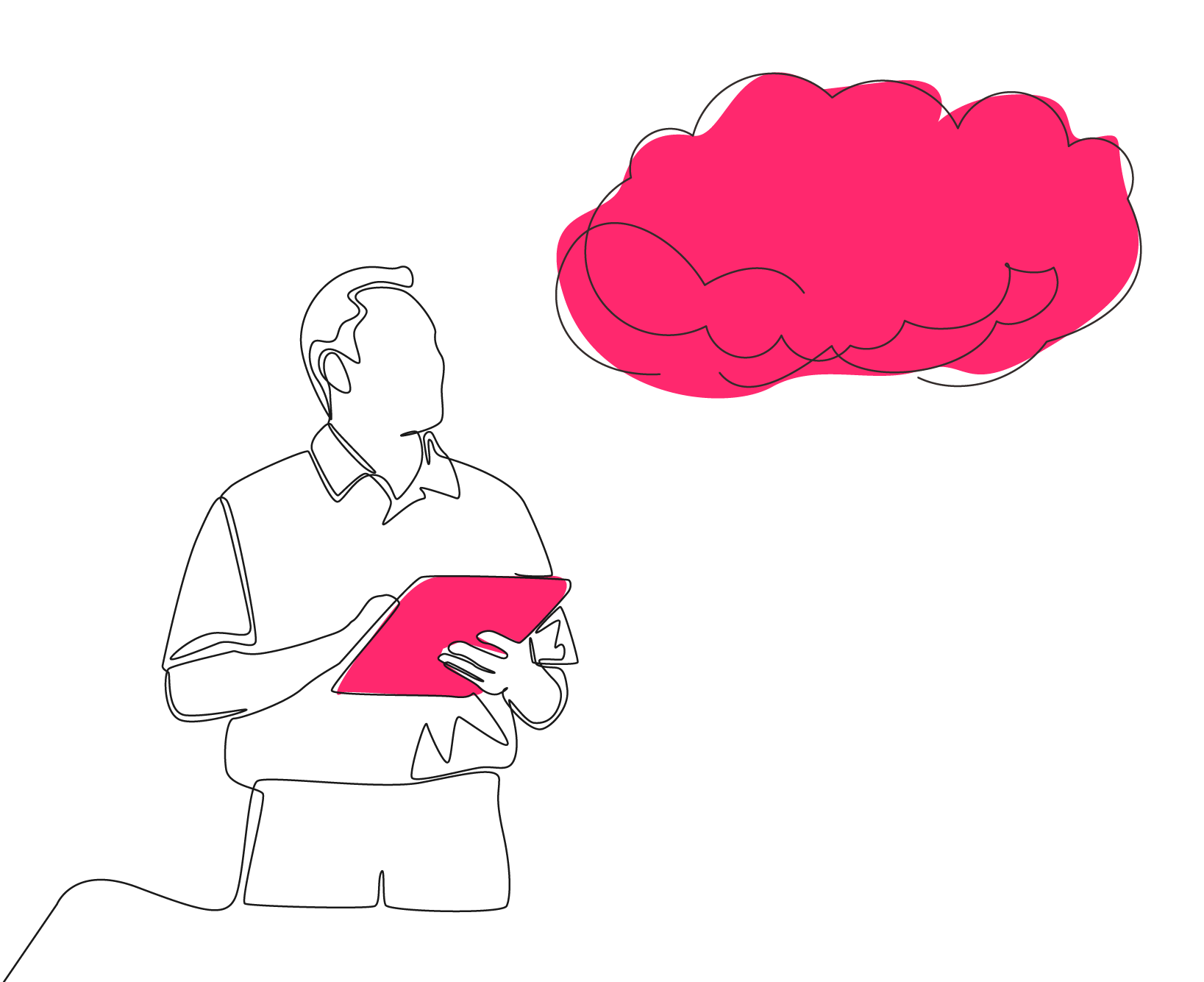As organizations increasingly look to the cloud for their database workloads, it’s essential to carefully plan and align your strategy with your business objectives. Based on extensive experience working with customers, we’ve identified six critical topics that many organizations need to explore when moving their databases to the cloud:
- Your Cloud Goals
- Your Application Development Model
- Your Workload Requirements
- Your Resiliency Needs
- Your Data Usage Architecture
- Your Innovation Plans
In this blog post, we’ll delve into each of these topics, providing insights to help you navigate your cloud migration effectively. We’ll also introduce our Silk Cloud Database as a Service (DBaaS) offering that can make cloud adoption for your databases a breeze.
The Importance of Planning Your Cloud Migration
Before diving into the six key topics, it’s crucial to understand why planning your cloud migration is so important. Contrary to some expectations, operating in the cloud can be quite expensive. While you can reduce upfront costs and shift from capital expenditure (CapEx) to operational expenditure (OpEx), cloud resources can quickly accumulate significant costs if not properly architected to leverage efficiencies and discounts.
Additionally, with the variety of solutions offered by the hyperscalers and independent software vendors (ISVs), selecting the right one for your business needs can greatly influence your strategic success. Rapid deployment in the cloud is easy, but ensuring it’s aligned with your goals requires careful planning.
Your Cloud Goals
Understanding why you are moving to the cloud is the first step. Common motivations include offloading data center management to cloud providers, leveraging advanced cloud technologies, and speeding up time-to-market. Aligning your cloud architecture with these goals can significantly impact how well and how quickly you achieve your objectives.
Your Application Development Model
Different organizations adopt varying models for managing cloud resources. We typically see three main approaches:
- Centralized Model: A central cloud team manages resources. This approach has the benefit of building expertise within the organization on your databases and cloud technologies. Centralized teams can also achieve cost efficiencies but can potentially slow down resource provisioning for other teams.
- Decentralized Model: Organizations shift responsibility for databases and other cloud resources to their application development teams. This approach enhances agility but possibly leading to a fragmented cloud environment and higher operational complexity.
- Hybrid Model: A balance of central management and application team empowerment.
Choosing the right model affects your cloud deployment process, team skills, and overall cloud efficiency. For example, organizations with a decentralized or hybrid model would benefit from getting external DBA support that comes with a DBaaS solution, as opposed to an automated PaaS solution.
Your Workload Requirements
Assessing your workload requirements involves making an inventory of your current databases and resources. Some things to think about as you go through this list include:
- Database Version: Is there a reason you are using a particular version, and will you be able to use it in the cloud?
- Database Features: Many cloud database solutions don’t support the full list of functionalities, so you need to confirm your cloud solution supports them.
- Number of Database: How many are running on each server?
- Resource Needs: Map CPU, memory, and capacity needs to cloud VM or PaaS options.
- Performance: Evaluate latency, IOPS, and throughput needs.
- Growth Projections: Plan for future scalability to avoid frequent migrations.
Your Resiliency Needs
Resiliency is critical for business continuity. Start by understanding your business requirements. Do your customer contracts dictate a certain level of availability and durability? Are there internal SLAs you need to hit or data processing windows you need to achieve? You’ll also want to consider the risk landscape, including:
- Continuity Levels: What availability and durability levels are needed?
- Disaster Recovery: How does your DR plan integrate with your cloud strategy?
- Resiliency Targets: What workloads need high availability and DR setups and what workloads – ie some dev/test and analytic environments – can have lower resiliency targets?
- Ransomware: Is it a significant concern for your operations? Some approaches suit this challenge more than others.
There are a handful of approaches for cloud database resiliency. Synchronous replication offers the lowest Recovery Point Objective (RPO) but can increase latency. Asynchronous replication, meanwhile, has a higher RPO but better performance. You can also set up zonal, regional, or even multi-cloud replication. Finally, you’ll want to review the different technologies you can use such as Microsoft SQL Always On or Oracle Data Guard and Active Data Guard.
(Note: Silk offers its own asynchronous replication capabilities with concurrent and cascading replication to serve complex architectures and different kinds of workloads.)
Your Data Usage Architecture
Your data is meant to be used and cloud migration can enhance data usage across your organization. But consider how your data will be used:
- Production Data: How important is freshness of this data? In industries like ecommerce and finance, timeliness of data is money. Do your production applications run through ETL processes or analytics program before becoming available? How fast are these pipelines?
- Dev/Test and QA: These environments benefit from fresh, realistic data to keep the development processes agile and to keep the quality of output high. Data security is a major concern. Do you need to clean or mask data before making it accessible to lower environments? This can affect the complexity and timing of your pipelines.
- Research and Analytics: The quality of data affects the quality of business decisions internal and external research.
For all of the above usages, certain technologies are very valuable. Snapshots can capture data for future reuse by multiple audiences, while views and clones make that data available for active use. However, not all snapshots, views, and clones are of the same quality, usability, and cost efficiency in the cloud. Understanding how you want your data to be used can help you determine what technology is required for your business.
Your Innovation Plans
The cloud can accelerate innovation, particularly with emerging technologies like AI. What will separate good AI and machine learning solutions from the great ones is the quality of data they draw on. Most of that data today lives in business-critical relational databases like Microsoft SQL Server and Oracle. Consider:
- Impact on Production Systems: Ensure innovation efforts, like data-hungry LLM models, don’t disrupt production.
- Technology Requirements: Different cloud providers have their own ecosystems for AI and analytics so choose wisely.
- Data Security: Protect your data from misuse and accidental publication when using experimental or early release technologies.
Introducing Silk Cloud Database as a Service
Silk Cloud Database as a Service (DBaaS) is a revolutionary new solution for companies seeking to break away from the constraints imposed by cloud vendors. With Silk Cloud DBaaS, you have the freedom to choose any VM shape, any version, any cloud, and any database, tailored precisely to your performance and capacity needs. Never be forced to update or implement patches on an inconvenient schedule imposed on you by the cloud vendors. Instead, with Silk, you dictate when updates occur, ensuring seamless operations on your terms.
In addition, our expert DBA team stands ready 24/7/365 to handle maintenance and troubleshooting, empowering your internal team to focus on strategic initiatives. Seamlessly integrating robust data management capabilities, Silk Cloud DBaaS safeguards and extracts maximum value from your data assets. Embrace cost efficiency with minimized cloud resource expenditure and optimized software licensing. With Silk Cloud DBaaS, you can experience unparalleled flexibility and control in your cloud database journey.
Moving your databases to the cloud can significantly enhance your operations and strategic capabilities. By carefully considering your cloud goals, development model, workload requirements, resiliency needs, data usage architecture, and innovation plans, you can optimize your migration to cloud database as a service.
Ready to Make Your Move to DBaaS?
Watch our webinar replay on key considerations to make your DBaaS deployment a success!
Let's Go!



